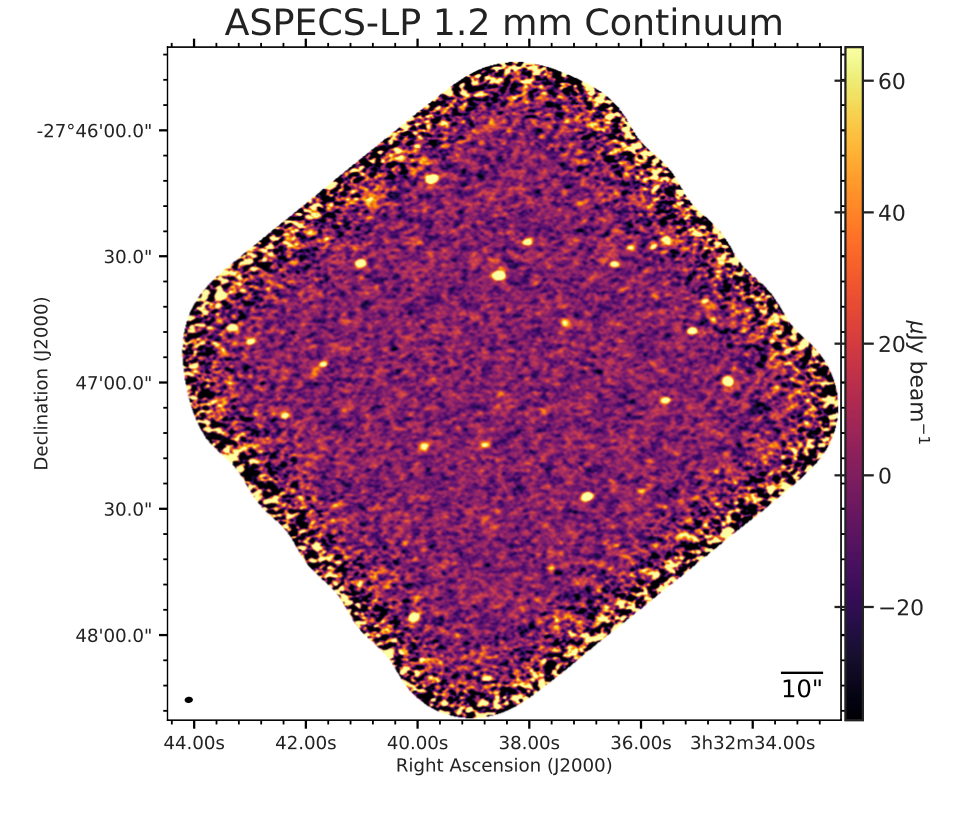Cosmology and the high redshift Universe
ALMA is ideally suited to trace the redshifted continuum emission from near and beyond the peak of the dust thermal emission. For high-redshift sources, negative k-correction overcomes the effect of the inverse square law and surface brightness dimming, making the submillimeter brightness nearly independent of redshift for z~0.5-10. The observed continuum emission can be used to trace the dust mass and temperature, the dusty star formation activity, and also the mass of the interstellar medium (ISM). Because of its capability to make extremely deep, high-resolution images of high-redshift galaxies, ALMA is an excellent and unique instrument for observing submillimeter galaxies (SMGs), for studying gravitational lensing, and for resolving the mm / submm extragalactic background light, which likely originates from fainter normal galaxies.
In addition, ALMA can detect and image line emission from molecular and atomic gas, which are important tracers of the cold and warm components in distant galaxies. In fact, ALMA opened a new window to study the earliest galaxies by using redshifted strong emission lines from doubly ionized oxygen ([OIII] at 88 micron). By combining other notable lines of ionized carbon ([CII]) and nitrogen ([NII]), the ratios of these fine structure lines can unveil the physical and chemical properties of young galaxies with early starbursts and rapid black hole growth during the epoch of cosmic re-ionization. The cold gas component is thought to be the constituents for new stars, but its distribution and properties are likely regulated by gas accretion/outflows and instability of rotating gas disks. Another advantage for ALMA is to determine the redshifts of dusty starburst galaxies and to trace the formation sites of massive galaxies in proto-cluster cores and/or along the cosmic web filaments.
Groups and clusters of galaxies are among the most massive gravitationally-bound objects in the Universe, and their distribution and evolution is sensitive to cosmology. Roughly 15% of their mass is in the form of a hot (> 107 K) component, with the rest being made up by dark matter (~80%) and stellar content (~3-5%). Though the hot gas content, known as the intracluster medium (ICM), is traditionally studied through X-ray observations, ALMA’s mm/submm observations offer a complementary and redshift-independent probe of this same gas through the Sunyaev-Zeldovich (SZ) effect. The SZ effect is sensitive to the line of sight integral of electron pressure, and uniquely manifests as a flux decrement at frequencies < 218 GHz.
Figure: ALMA 1.2 mm continuum image of the Hubble Ultra Deep Field (H-UDF) obtained by the ASPECS Large Program (González-López et al. 2020, ApJ, 897, 91).
ALMA Science Highlights

